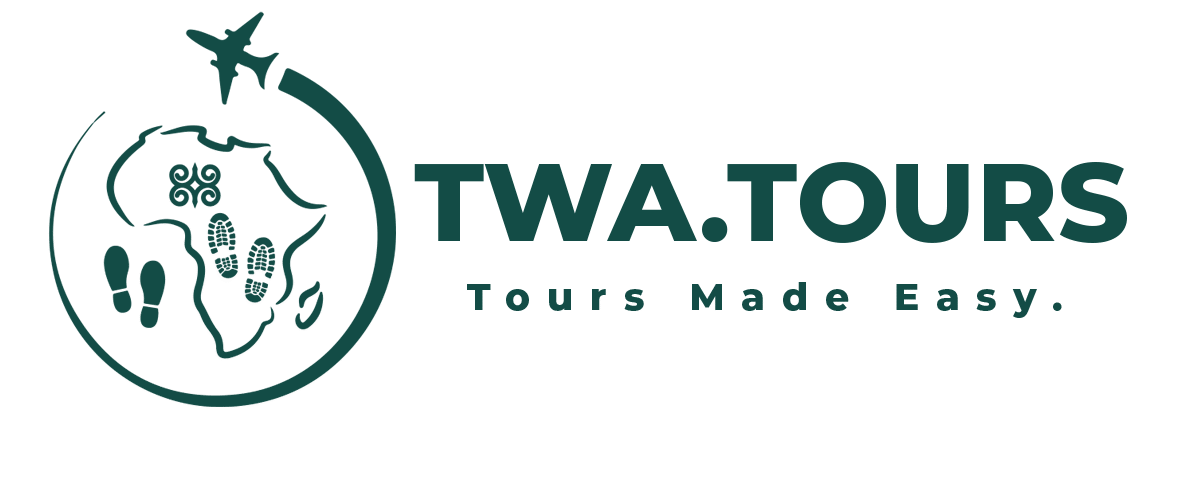Season of Festivals & More Tour

Ghana boasts of many unique ethnic groups and all these groups celebrate their uniqueness in culture at the annual festivals. These festivals are often reenactments of the past. During these celebrations, history is retold and the rich Ghanaian customs are depicted in the most colorful and unimaginable ways. These festivals bring people together and homage is paid to the custodians of the land. This tour allows you to be part of the colorful culture events of ethnic groups from across the various regions in Ghana as they celebrate culture traditions. You will work with one of our Tour Consultant to plan and schedule the festivals and the activities you would like to participate in where your schedule permits. We have included a few noteworthy festivals below that occur throughout the year that will give you an idea of what to expect. We will also take you to some of the popular tourist attraction destinations throughout the regions, so prepare yourself for joy, fun and adventure. Come join us and experience the cultural festivals of Ghana and visit some of the most marvelous attractions on the African continent.
Homowo Festival
The Homowo festival is a festival celebrated by the Ga people who are the inhabitants of the Greater Accra region. The festival is a food festival which is celebrated to commemorate the end of a severe famine that happened in the past. There is a ban placed on noise-making during the period. The celebrants prepare a staple food and then the paramount chief goes round to sprinkle the food in the community to indicate that there is food in abundance. During this festival, you would be taught how to prepare the staple traditional food used for the festival. The elders of the town would recount the history behind the festival and the elderly women would teach you how to sing some indigenous Ga songs. There would be a tour of the Ga Mantse’s palace and you would get to experience fishermen using boats to fish on the high seas.
Bakatue Festival
This festival is celebrated by the chiefs and people of Elmina. The festival is celebrated to commemorate the establishment of the town of Elmina by the Portuguese. The name of the festival is translated to mean “Draining of a lagoon”. Being predominantly a fishing community, the festival is celebrated in the area to thank the gods for a bountiful fishing year. The major highlights of the festival are the regattas held. The festival is celebrated in style as many masqueraders parade the streets in their colorful apparel. There is a grand durbar held were sub-chiefs come to pay homage to the paramount chief of the area. Many elder people recount the history of the Elmina people in stories and folk songs.
Aboakyer Festival
The Aboakyer festival is a bushbuck hunting festival celebrated by the people of Winneba in the Central Region of Ghana. The name ‘’Aboakyer’’ translates as ‘hunting for game or animal’ in Fante dialect. The institution of the festival is to commemorate the migration of Simpafo (tradition name given to the people of
Winneba). The people believed that a god, who they called Otu, protected them from all dangers during their migration from Timbuktu and to show their appreciation, the people consulted the custodian of the god, a traditional priest who acted as an intermediary between the people and the god, to ask the god for its preferred sacrifice. To their astonishment, the god asked for a human sacrifice, someone from the royal family. This sacrifice went on for some years but was later stopped as the people were no longer interested in human sacrifices. A request was made to the god to change the sacrifice type, as they believed that sacrificing royalty could eventually wipe out the royal family. The god in return asked for type of wild cat to be caught alive and presented to it at its shrine. After the presentation, it was to be beheaded as a sacrifice. During the festival, you will get the chance to join the hunting expedition, be part of the durbar and get to witness the colorful durbar.
FETU AFAHYE
The FetuAfahye is a festival celebrated by the chiefs and peoples of Cape Coast in the Central region of Ghana. The FetuAfahye is celebrated annually by the Oguaa people of Cape Coast because in the past there was an outbreak of disease among the people that killed many. The people prayed to the gods to help them to get rid of the disease. Thus the festival is celebrated to keep the town clean and to prevent another epidemic befalling the people. It is one of the major festivals in Ghana and there is a grand durbar where culture and heritage are displayed.
HOGBETSOTSO FESTIVAL
The Hogbetsotso festival is celebrated by the chiefs and people of Angola in the Volta region of Ghana. The name of the festival is derived from the Ewe language and translates as, the festival of exodus or “coming from Notsie”. The celebration of the festival is celebrated to mark the successful fleeing of the Anloga people under a tyrant king of Notsie by name King Agorkoli. During the festive celebration, the history of the Anloga people are recounted. They is a play that is done to reenact the strategic escape from slavery and captivity. There are many exhibitions done including showcasing cuisine from the region.
KUNDUM FESTIVAL
The Kundum festival is celebrated by the Ahanta or Nzema people of the Western region of Ghana. It is celebrated to thank God for the abundance of food at the time of the harvest period of the area. Kundum is both a harvest and religious festival. The start of the festival is based on the day the fruit of a certain palm tree becomes ripe. The people who participate in the celebration wear distinctive dress, footwear, and masks. The festival begins by musicians taking the drums to the five different shrines on the outskirts of the town. At the shrines, requests for the good of the town are made, and rum is poured on the ground as libation. Get to be a part of the processing train that goes to the outskirts of the town.
ADAE KESE FESTIVAL
AdaeKese Festival (“big resting place”) is a celebration of the Ashanti. It glorifies the achievements of the Asante kingdom. It is also the occasion when the purification
ceremony of Odwira is performed at the burial shrines of ancestral spirits. The celebration coincides with the harvest season f yam. During the festival, the Asantehene sits in a durbar and receives homage from the people of the region. There is a lot of merry-making since the festival marks a New Year on the traditional calendar. The history of their predecessors are recounted and there is a rich display of culture.
Damba Festival
The Damba festival is celebrated by the chiefs and people of Nalerigu Tamale and Wa in the Northern region and Upper West Region of Ghana. Damba is celebrated to mark the birth and naming of Muhammad, but the actual content of the celebration is a glorification of the chieftaincy, not specific Islamic motifs.
Bugum Chugu Festival (Fire Festival)
The Bugum Chugu (Fire Festival) is the first Dagomba festival in the year. During the celebration the main highlight is a re-enactment of an old tradition believed to be links with Noah and the ark. The people hold torches, swords, cutlasses, knives, bows, arrows and cudgels. The mood of the people is war-like. The atmosphere is heavily charged as they display their indigenous dance. The celebrants also dance round a bonfire.
Cape Coast Slave Castle
The colonial slave Castle located in the Central region of Ghana was built by the Swedes in 1653. The castle used to be the seat of government in the colonial era till it the seat of government was moved to Accra. You would get the opportunity to interactive with the castle tour guides and get real experience with the dungeons that housed the slaves and you would get to hear stories that were told in the colonial days. The castle also houses the West African Historical Museum, established by the Smithsonian Institute in collaboration with the Ghanaian Government in 1994.
Kakum National Park
This natural forest habitat is one of Africa’s finest national parks. Kakum National Park is also in the Central parts of Ghana. It protects an area of rainforest, home to endangered mammals such as forest elephants, bongo antelopes and primates like the Diana monkey. The park is rich in butterflies and birds, including African grey parrots and hornbills. The highlight of the tour would be a walk on the famous canopy walk in the forest reserve. The Canopy Walkway is suspended 30 meters above the ground and it provides treetop views of the forest.
Kwame Nkrumah Mausoleum
This exhibition Mausoleum houses the mortal remains of Kwame Nkrumah, Ghana’s first Prime Minister. There are many personal effects of the prime minister on exhibition. The tour guides would walk you through a trajectory of the life of the man
who helped Ghana gain its independence from her colonial masters. Right opposite the mausoleum is Ghana’s first parliament house which would also be viewed.
Boti Waterfalls
Boti falls is a twin waterfall located in Manya Krobo; a suburb in the Eastern Region of Ghana. These twin falls are referred to as female and male. You will get the chance to bask in the cool water while you enjoy the surrounding greenery in what is one of Ghana’s total natural habitats.
Aburi Botanical Gardens
Depart for the beautiful Aburi Botanical Gardens. The Aburi Botanic Garden is one of the most beautiful, peaceful and fascinating places in Ghana. This eco-paradise was created in 1890 for pleasure and scientific research. It is an exceptional habitat for plants and butterflies from all around the world. The Aburi Botanic Garden is a must experience place for every Ghanaian as well as visitors to Ghana.
Fantasy Coffin Work Shops
We will visit the Seth Kane Kwei Carpentry Workshop studio and other workshops in the area located in Teshie, Ghana. Seth Kane workshop is known for its fantasy coffins that became symbolic of African artistic creativity. These unique crafts have been featured at exhibitions in the Centre Pompidou, the Grande Halle culture center in Paris, the New Museum of Modern Art in New York as well as exhibitions in Belgium and Spain. It is believed in Ghana that the coffins are what truly show the essence of the person to be buried. The coffins are supposed to show what the person did during his life, what his habits were and what he loved. Today there are more than a dozen workshops that manufacture fantasy coffins in Ghana.

